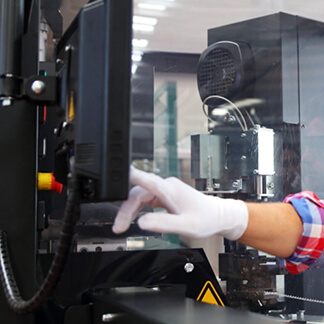A comprehensive maintenance diagnostic compares current activities to world-class performers and shows how to close the gaps.
When we assess poorly performing manufacturing operations, we quantify both the performance improvement potential and the remediation costs of poorly maintained equipment. These costs can be significant across a broad network of facilities.
Common attributes of companies requiring support with facility maintenance include:
- Capital-intensive industries with a heavy reliance upon industrial equipment
- Companies where expensive raw materials make up a large percentage of direct costs
- Industries that have significant cost risks from poor quality, excessive scrap, rework,downtime, or an inability to meet customer delivery needs.
- Maintenance leaders with strong technical aptitude but who lack leadership, employee development and planning skills.
If you’re seeing some of the warning signs that maintenance is becoming a problem, a comprehensive maintenance diagnostic could be in order.
Elements of a 10-Point Maintenance Diagnostic
A focused diagnostic of maintenance practices at the facility or enterprise level will cover the 10 key areas:
- Safety
- 5S
- Maintenance Measures
- Facilities Maintenance
- Equipment Maintenance
- MRO (Maintenance, Repair and Overhaul)
- Information Management
- Work Order Management
- Maintenance Organization
- Culture
Total productive maintenance and autonomous practices may also be assessed.
The purpose of the diagnostic is to determine if a maintenance organisation has the capabilities, leadership, and process discipline required to meet operational deliverables. Each area needs to be evaluated based on maturity, talent, tool usage, process ownership and performance.
The Three Levels of Maintenance Maturity
- Early stage: Living in a reactive state with a higher frequency of equipment breakdowns and high maintenance costs
- Mid-level stage: Operating in a more proactive, preventive state with fewer breakdowns and more planned maintenance activities
- Excellence stage: Working ahead in a more advanced state with a high degree of sophistication with the ability to leverage data and analytics to prevent or even predict breakdowns
The diagnostic of a facility’s maintenance program starts with a review of current metrics. The performance metrics used will vary based on the organisation’s level of maintenance maturity. Common metrics include: Overall maintenance costs, percentage of corrective and preventive work, percentage of overtime, stockroom inventory turns, percentage of emergency work, overall equipment effectiveness, uptime/downtime, mean time between failures, maintenance backlogs, and so on. We look at how sophisticated the metrics are, how frequently they are updated, and how they are used and communicated to team members.
When reviewing equipment maintenance practices,we checkup time and preventive maintenance reports. We observe the communication practices between maintenance department personnel and with other functions. Walking the plant floor, we look for over-grease conditions, tools and spare parts lying around, and whether the equipment is running. If not, we ask how long it’s been down. If maintenance is in process, we see how many associates are engaged, and whether they are all adding value.
The duration of the diagnostic will vary depending upon the scope, complexity and available data. The final analysis quantifies the negative impact of current performance levels. We then identify improvement opportunities, the potential cost savings and performance gains(in quality, productivity, asset utilization,etc.). Ago-forward plan will detail next steps and estimate the remediation time, external resource requirements and any other expenses. The first step in turning around a struggling maintenance team is understanding the current state and improvement potential. A comprehensive diagnostic will detail current opportunities for improvement and the bottom-line benefits of investing in a more effective maintenance department.






